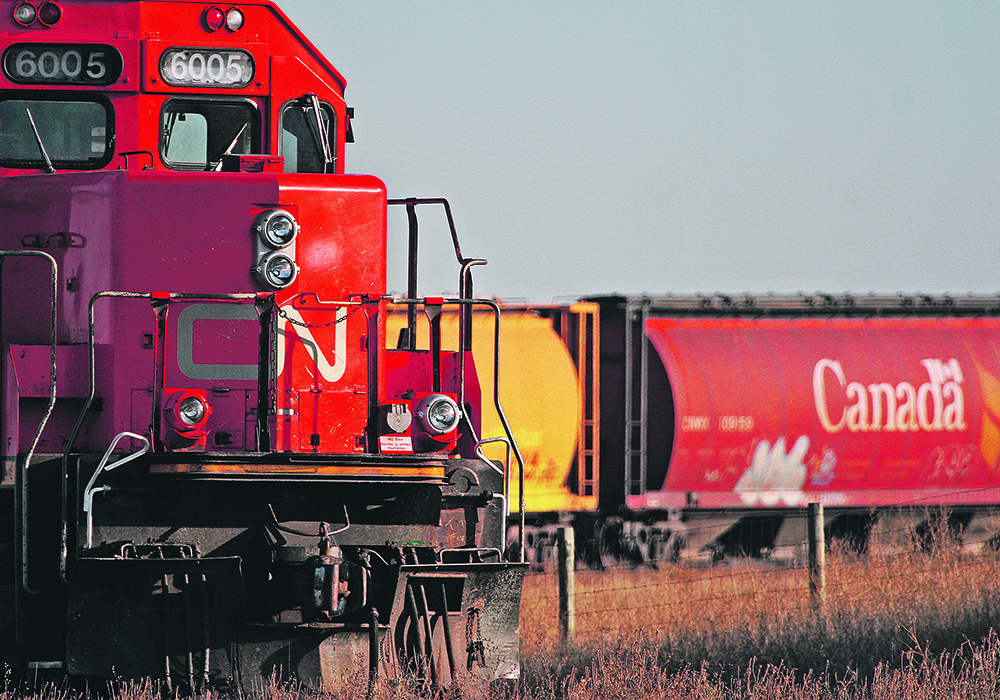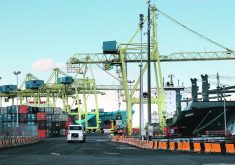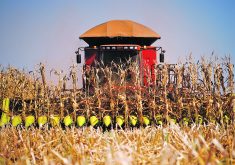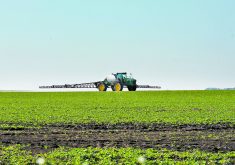Canadian National Railway president Tracy Robinson said during a recent speech to the Regina business community that it’s time for a more transparent supply chain.
Pointing fingers at different players in that chain doesn’t move any more grain, she noted.
After a record grain week for the railway, which was Week 12 in mid-October at 810,000 tonnes, and a record October overall at more than 3.3 million tonnes, rain in Vancouver in November slowed everything down.
At one point more than 20 loaded trains were waiting at sidings to get into the port of Vancouver.
Read Also

Using artificial intelligence in agriculture starts with the right data
Good data is critical as the agriculture sector increasingly adopts new AI technology to drive efficiency, sustainability and trust across all levels of the value chain.
“We can get angry and point fingers,” Robinson said at the speech held at Canadian Western Agribition. “Or as some do, we can suggest the regulators come in and fix the railways. To be clear, neither of these things does anything at all to improve the throughput or the performance of the supply chain.”
Robinson said more co-operation, transparency and collaboration is the way to go.
Temporary issues are one thing but systemic issues, such as the inability to load grain in the rain, have to be dealt with by the entire supply chain. Transparency and understanding where capacity needs to be added are critical, especially when it comes to Canada’s role in supplying food.
“The point is to move more grain, more quickly, to market. Canada’s flagship export needs a reliable supply chain,” she said.
Robinson was raised on a farm at Bethune, not far from Regina.
“I grew up somehow understanding that the railways, they weren’t good people,” she told the crowd. “I do understand, though, how someone gets to that point of view.”
She blamed the way car orders and fulfilment are measured and how that is reported in industry press.
The railway and shippers plan for cars needed, the railway commits a number, and if either party fails to deliver, they pay penalties. Reporting focuses on cars delivered against orders rather than cars committed, she said.
“This approach has one flaw. We are measured by the industry and by the trade press on whether we spotted the number of cars the customer ordered, not the number that were committed, but the number of cars the customer ordered, whether the supply chain can take them, whether they can be loaded, whether they can be unloaded,” Robinson said.
“By this standard we can deliver every car committed to, but in the eyes of the industry, the eyes of those that are measuring, and reporting in industry press, we failed. This is the perceived failure that’s often pointed to as the problem in the supply chain, even if it’s not accurate or it’s caused by something unrelated.”
Robinson said this isn’t the correct way to measure performance of railways or the whole supply chain.
Calls for regulators to “fix the railways” may result in unintended consequences because those fixes might not address the real problem, she said.
“Where the government or regulator could be useful is in obtaining greater clarity around what’s going on in the supply chain.”
In the medium-term, Robinson said more collaboration is best and in the long term there must be more capacity throughout the chain. Crop shipments are growing each year and she also urged more use of all ports available, not just through congested Vancouver.
Robinson did not give interviews after her presentation but David Przednowek, assistant vice-president of grain at CN, said her comments about industry reporting indicate there is a lack of understanding about why certain things happen. He said CN’s own weekly reporting provides a better perspective because the railway begins with a realistic limit on what the supply chain can handle.
If all the correct ingredients are in place, the supply chain can deliver as promised, he said, but starting with the premise that car supply is the best measurement is “a bad starting point.”
“We take a look at the orders that we can accept and plan, and we accept those orders based on how the supply chain is doing in a given week and what it can handle and then we measure ourselves,” Przednowek said of the CN weekly report.
“One distinction is capacity is not infinite and we start with the understanding that there is a realistic limit to what the end-to-end supply chain can handle.”
Przednowek pointed to improvements through National Trade Corridor funding that have been helping to remove bottlenecks, particularly through Vancouver.
















